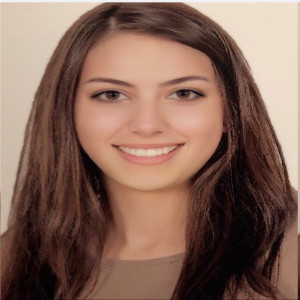Conference
2022
Gene Expression Microarray Data Classification based on PCA and Cuttlefish Algorithm
2022-04
2022 International Conference on Computer Science and Software Engineering (CSASE)
The redundant or irrelevant features in microarray datasets cause difficulty in apprehending the prospect patterns directly and accurately. One of the necessary strategies for distinguishing and screening out the most relevant features is Feature Selection (FS). However, the increasing feature dimensions and small sample size in microarray datasets pose a significant challenge to most existing algorithms. To overcome this issue, we propose a novel method based on Principle Component Analysis (PCA) and Cuttlefish Algorithm (CFA), which is a recent bio-inspired feature selection algorithm. The critical characteristic of the PCA algorithm is that it is less sensitive to noise and requires less memory and capacity. Furthermore, adopting the PCA approach before using CFA minimises the search space within CFA, which speeds up determining the best subset of features while reducing the computational cost. To assess the performance of the proposed method, three publicly available microarray datasets are utilized in the experimental studies using a Linear Discriminant Analysis classifier. Experimental results showed that PCA with CFA significantly outperforms the state-of-art feature selection methods.
2020
COVID-19 Diagnosis Systems Based on Deep Convolutional Neural Networks Techniques: A Review
2020-12
2020 International Conference on Advanced Science and Engineering (ICOASE)
The rapidly spreading of the viral disease “COVID-19” causes millions of infections and deaths worldwide. It causes a devastating impact on lifestyle, public health, and the global economy. This motivates the researchers to invent and develop innovative and automated methods to detect COVID-19 at its early stages. It is necessary to isolate the positive cases quickly to prevent this epidemic and treat affected patients. Many diagnosis methods are proposed to perform accurate and fast detection for COVID-19, such as Reverse transcription-polymerase Chain Reaction (RT -PCR). The clinical studies indicate that the severity of COVID-19 cases depends on the virus's amount within infected lungs. Chest X-ray (CXR) and Computed Tomography (CT) images are useful imaging methods for diagnosing COVID-19 cases. Deep Convolutional Neural Network (DCNN) is a machine learning technique usually used in computer vision applications. This review focuses on utilizing the DCNN methods for building an automated Computer-Aided Diagnosis (CADs) system to detect and classify the infected cases of the COVID-19 disease accurately and fast. These techniques are used to extracts valuable information by analyzing a massive amount of CXR and CT images that can critically impact on screening of Covid-19. DCNN techniques proved their robustness, potentiality, and advancement by comparing them among the other learning algorithms. It is worth noting that DCNN is an essential tool for supporting physicians' clinical decisions.
Queuing Theory Model of Expected Waiting Time for Fast Diagnosis nCovid-19: A Case Study
2020-08
2020 International Conference on Advanced Science and Engineering (ICOASE)
This Queuing theory analysis has been used in hospitals and other healthcare settings; its use in this sector is not widespread. Consequently, the queue waiting line is an effective scientific tool in the performance of waiting lines analysis. The main parameters used to measure the performance of the systems are the length of the queue line, utilization of the server, and the delays for arrivals. This study aims to avoid others to expose to epidemics such as (nCovid-19), because of becoming a big global problem today in the world. Also, to know the length for the expected and actual waiting times to diagnosis the arrivals to Duhok city. Collection and execution are done within one week with one activity healthcare team's (HCT) in the main entry Duhok city, port. Data was collected utilize individual conceptions and records from Saturday through to Thursday, which is the most critical time setting. The main interest in this study was calculating the average waiting time spent after the process to improve arrivals satisfaction using the queuing theory model. The results of this analysis indicate for each citizen checked by the healthcare team may be waiting 32.44 minutes in a queue. Also, was estimate to provide the results of system capabilities with characterization related to the expected waiting time. Finally, Medical staff at the city outlets can estimate; how many arrivals will be waiting in the line and the number of clients that will walk away each day.
2019
Facial Expression Classification Based on SVM, KNN and MLP Classifiers
2019-04
2019 International Conference on Advanced Science and Engineering (ICOASE)
Facial Expression Recognition (FER) has been an
the active topic of papers that were researched during the 1990s till now,
according to its importance, FER has achieved an extremely role
in the image processing area. FER typically performed in three
stages include face detection, feature extraction and
classification. This paper presents an automatic system of face
expression recognition which can recognize all eight basic
facial expressions which are (normal, happy, angry, contempt,
surprise, sad, fear and disgust) while many FER systems were
proposed for recognizing only some of the facial expressions. For
validating the method, the Extended Cohn-Kanade (CK+)
the dataset is used. The presented method uses Viola-Jones
algorithm for face detection. Histogram of Oriented Gradients
(HOG) is used as a descriptor for feature extraction from the
images of expressive faces. Principal Component Analysis (PCA)
applied to reduce the dimensionality of the Features, to obtaining the
most significant features. Finally, the presented method used
three different classifiers which are Support Vector Machine
(SVM), K-Nearest Neighbor (KNN) and Multilayer Perceptron
Neural Network (MLPNN) for classifying the facial expressions
and the results of them are compared. The experimental results
show that the presented method provides the recognition rate
with 93.53% when using SVM classifier, 82.97% when using
MLP classifier and 79.97% when using KNN classifier which
refers that the presented method provides better results while
using SVM as a classifier.
Back
